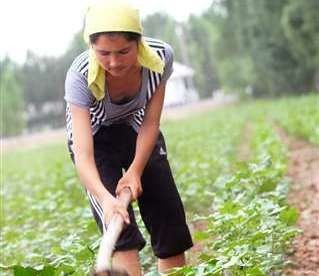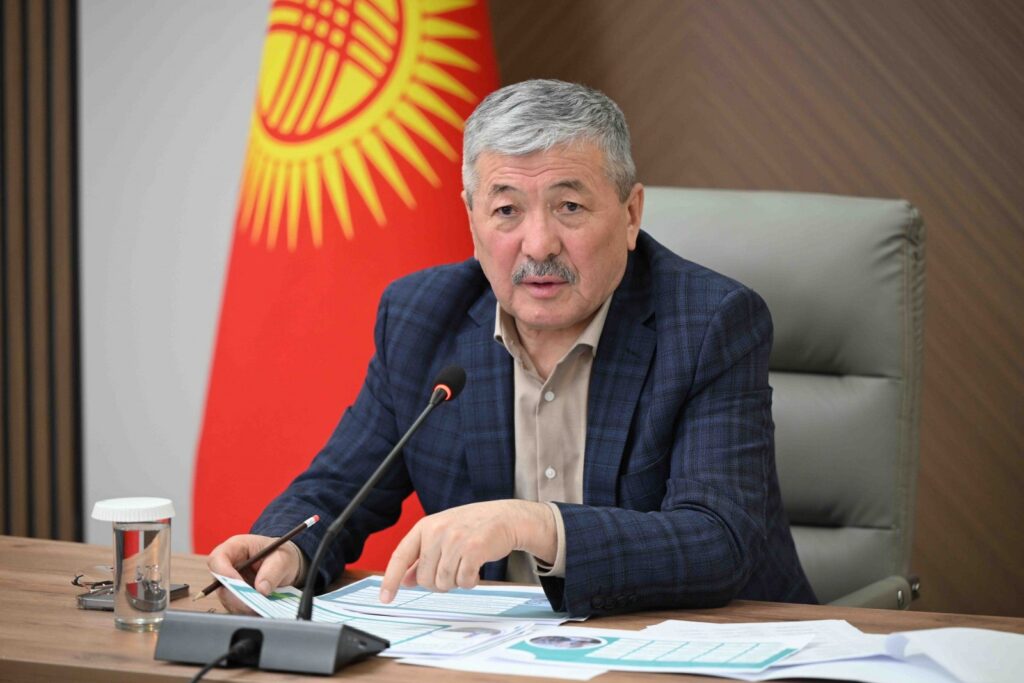BISHKEK (TCA) — Central Asian countries intend to increase their export of agricultural products to the partner countries in the Eurasian Economic Union, as well as to the European Union.
The EU granted Kyrgyzstan the Generalized System of Preferences status (GSP+) in 2016, which gives the right to Kyrgyz producers to export about 6 thousand commodity items to Europe at zero tariff rates.
However, the implementation of ambitious plans can be hampered by the use of child labor in agriculture.
Kyrgyzstan
Kyrgyz entrepreneurs export beans to Turkey, Russia, Poland, Macedonia, Serbia, Poland, Bulgaria, Georgia, and Kazakhstan. Farmers in the south of the country are planning to increase the export of high-quality organic cotton.
However, the use of child labor in the cultivation of cotton and beans may interfere with these intentions.
To solve this problem, the Kyrgyz association of young entrepreneurs (JIA business association) and the International Labor Organization joined efforts to implement a pilot project to expand the economic opportunities of vulnerable families to eliminate the worst forms of child labor in Kyrgyzstan.
On September 20, a seminar was held on this topic in Bishkek. According to Bolot Orokov, ILO national coordinator in Kyrgyzstan, the analysis of supply chains of cotton and beans should show the real value of child labor in the country.
“The poor education and intensive flow of labor migration make us think about how the labor market should develop in Kyrgyzstan,” he said.
The business is concerned about the involvement of child labor in agricultural works. In the short term, it can solve some issues, but in the long term it would harm the whole nation, the JIA believes. The business association intends to help the State in preventing the use of child and forced labor.
There are many opportunities to solve the problem including joint implementation of projects, development of self-employment institutions in the regions, training of SMEs, creation of conditions in which both entrepreneurs and employees could comply with the norms of labor legislation, as well as raising population’s awareness about the futility of using child labor in the production chain of any sector, the JIA said.
Uzbekistan
The U.S. have excluded Uzbekistan from the list of countries where child labor is used in the cultivation and harvesting of cotton. On September 20, 2018, the U.S. Department of Labor (USDOL) published the 17th edition of its annual Findings on the Worst Forms of Child Labor (TDA report), “Age of Acceleration.”
“The Government of Uzbekistan’s work with the international community to significantly reduce the forced mobilization of children in the cotton fields is one example of how such change can and does happen,” TDA report says.
According to the ILO, there was a meaningful decrease in the number of children picking cotton each year starting in 2015. In 2017, Uzbekistan made moderate efforts to eliminate the worst forms of child labor.
USDOL supported these efforts by funding the Uzbekistan Decent Work Country Program (DWCP), which is implemented by the ILO. As part of this project, the Uzbek government and ILO conducted extensive awareness raising activities on the prohibition of using children to harvest cotton and conducted research on recruitment and working conditions in the agricultural sector.
The most convincing signal of the coming changes was the speech of Uzbek President Shavkat Mirziyoyev at the UN General Assembly in New York in September 2017. He promised that the country would abandon forced labor and reaffirmed its commitment to cooperate with the ILO. A Parliamentary Commission was established to monitor implementation of prohibitions on child labor and forced labor in Uzbekistan.
Cotton is a strategic raw material for Uzbekistan. The country is among the world’s top ten in terms of cotton fiber production and its exports. In 2017, Uzbekistan harvested more than 2.9 million tons of raw cotton.
Since the Soviet times, hundreds of thousands of residents of the country, whose main activity had no relation to agriculture — teachers, doctors, students, and employees of enterprises — were forced to pick cotton.
Kazakhstan
Kazakhstan’s legislation restricts child labor and provides for criminal and administrative responsibility for involving children in the worst forms of child labor.
In all cases of illegal child labor, the reason is the desire of teenagers to earn, due to the difficult financial situation of their families, and it is sometimes difficult to find a rather fine line between the necessary work in the family and labor exploitation.
The report of the International Federation for Human Rights (FIDH) “Invisible and exploited in Kazakhstan” published in June 2018 was based on the results of several missions conducted from September to November 2017 in Kyrgyzstan (country of origin) and Kazakhstan (country of migration) as part of the FIDH project to protect the rights of labor migrants.
Missions in Kazakhstan recorded violations of labor migrants’ rights from Kyrgyzstan, including the use of child labor. Together with adults, most of the minor Kyrgyz migrants came from the southern part of the country (Osh, Isfana and Batken) to southern Kazakhstan (Almaty and Shymkent regions) and to Astana. Migrants from Kyrgyzstan usually work in markets, in the agricultural and construction sectors, and women also work as nannies.
Labor migrants, often together with their children, also find work in tobacco farming. Taking into account the risks related to the handling of tobacco leaves and exposure to pesticides, experts agree that tobacco farming is among the worst forms of child labor.
Turkmenistan
In May of 2018, the U.S. used the extensive research of forced labor in the production of cotton from Turkmenistan and made the historic decision to block all goods made with Turkmen cotton from entering the United States.
“The message here is clear: If you are a trading partner that does not abide by and uphold your commitments to end child labor or forced labor, the U.S. will do what it takes to protect vulnerable workers from exploitation, safeguard American jobs, and create a fair playing field for countries that play by the rules,” the TDA reported.
Tajikistan
Since 1993, Tajikistan has been an ILO member and it ratified all ILO fundamental conventions including the one on the Prohibition and Immediate Action for the Elimination of the Worst Forms of Child Labor.
Last year, the Tajik government approved a list of jobs that prohibit the labor of children and adolescents under 18, but the list did not include cotton harvesting.
Child labor was always used in Tajikistan and the rural population has never considered the picking of cotton unbearable for children. Historically, Tajikistan was mainly an agrarian country, as it currently remains. In the Soviet period, in the 1980th, a record was set — the country harvested one million tons of raw cotton.
Before the collapse of the Soviet Union, all rural schoolchildren were involved in cotton harvesting in Tajikistan, as well as students of vocational schools and higher educational institutions.








